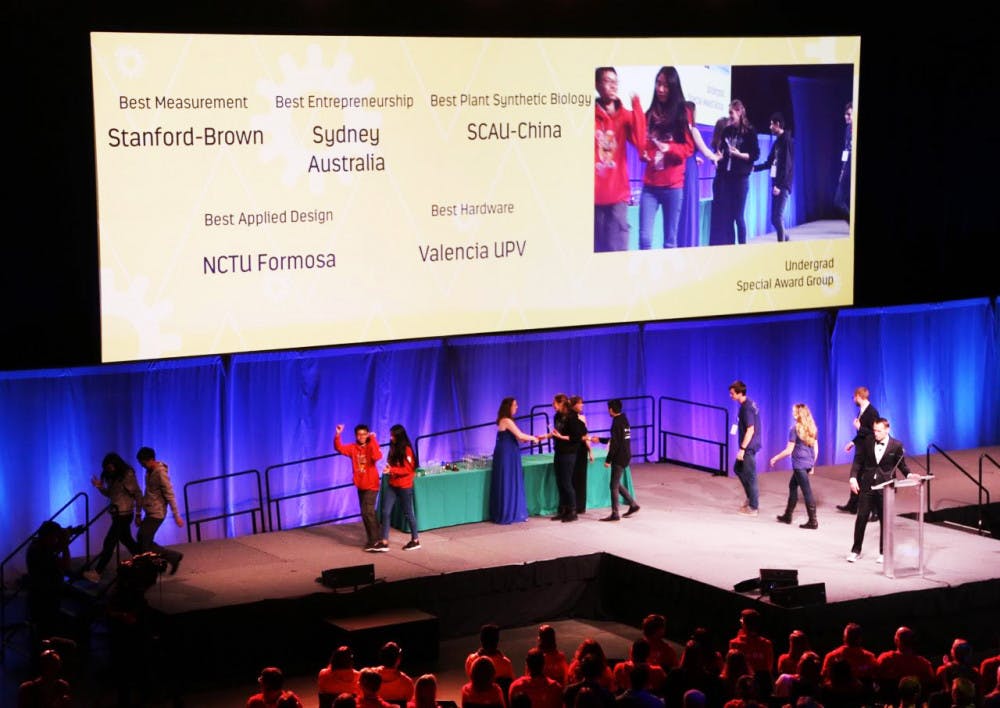At this year’s International Genetically Engineered Machine competition held over the weekend, a team of Brown and Stanford University students joined over 300 groups presenting new research in the field of synthetic biology. The Stanford-Brown team presented the fruits of a summer spent at the National Aeronautics and Space Administration Ames Research Center creating the components of a bioballoon — a high-atmosphere balloon made entirely out of biological material — which garnered one medal and two category nominations.
“The concept (of iGEM) is to make it easy to take genetic components, screw them together and make something new,” said Lynn Rothschild, adjunct professor of molecular biology, cell biology and biochemistry, the team’s primary advisor and a researcher at Ames. Teams are given access to standardized pieces of genetic code, called BioBricks, and they put them together in different ways to modify organisms, Rothschild said.
Each iGEM team publishes the results of its research and adds to the growing library of BioBricks, contributing to a biological equivalent of open-source code, and each team uses results of research from previous years. This year’s Stanford-Brown team used genetic code compiled by a team from last year’s competition “to make an mRNA circularization device,” said Charles Gleason ’17, a member of the team.
At a practice presentation Oct. 27, the team explained the reasoning behind its investigation. “We wanted to develop a tool to help planetary scientists,” said Amy Weissenbach, a Stanford student and the team’s human practices and outreach coordinator. The team met with planetary scientists to understand what applications of synthetic biology would be most useful for space exploration and eventually settled on the idea of a balloon.
Organizations like NASA can deploy orbital vehicles such as satellites high above the surface of a planet and can place rovers on the ground, but “the space in between (orbiters and rovers) has a huge amount going on” and is often left unexplored, said James Head III, professor of geological sciences. The balloon could explore the atmosphere and take measurements of key characteristics.
In order to best survey this space, a bioballoon “should be able to traverse a planet’s atmosphere,” as well as “monitor temperature and sense small molecules,” Weissenbach said. At the same time, Weissenbach added that the bioballoon would “minimize the risk of contaminating any environment (it explores).” In order to avoid the possibility of contamination, none of the material in the final balloon could be living.
“By considering these design goals, we were able to identify three main categories for (our research),” said Taylor Pullinger ’18. The students had to figure out “how to produce a biomembrane,” as well as gas for the balloon and biosensors, she added.
The team did not actually create a balloon out of biological material but made significant progress in each of these areas of investigation. By the end of a summer of research, the team’s members genetically engineered E. coli to produce latex, embedded temperature-sensitive chromoproteins in a cellulose membrane to act as a temperature-sensitive ink and produced biosensors that fluoresce with green light when they contact certain molecules.
“Synthetic biology is so much the wave of the future,” Head said. “In the space program, it’s going to be a key to success.” The team’s webpage states that synthetic biology could be used to reduce the mass — and therefore cost — of materials sent into space. “Instead of sending bulky materials, we could send microbes engineered to grow the components required to build various tools and structures.”
Despite these successes, for the students working on these projects, “the drive has to come from you being interested in the problem,” said Erica Jawin GS, a fourth-year graduate student in the planetary science department who helped advise the team.
“Einstein is reported to have said, at the advent of the nuclear age, ‘everything has changed but our way of thinking,’” Head said. “And that’s exactly what’s happening here. We do not have a clue what this is going to do, but these students are the ones that are going to be doing it.”





